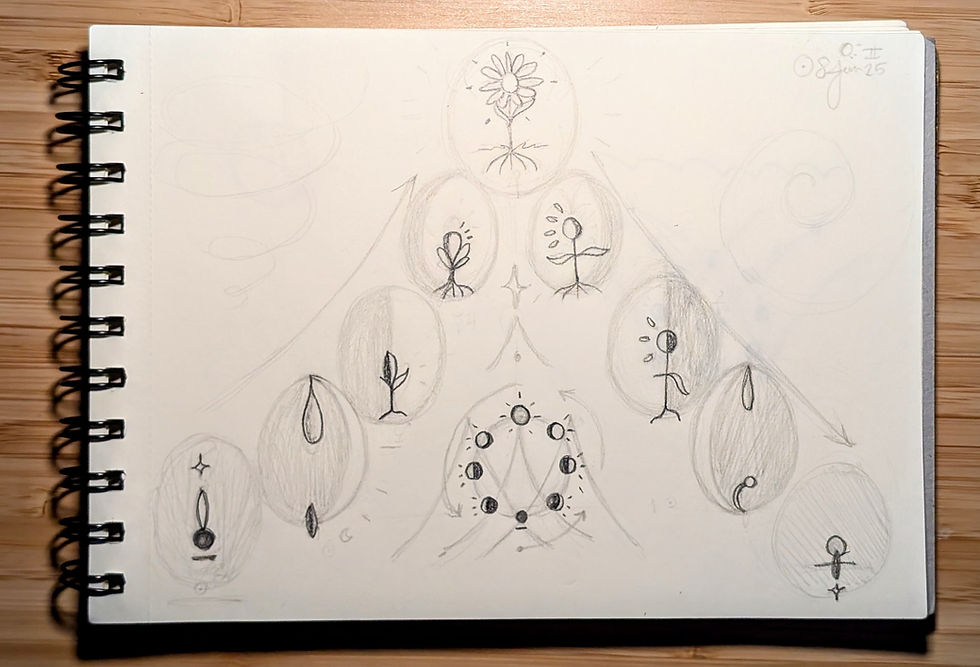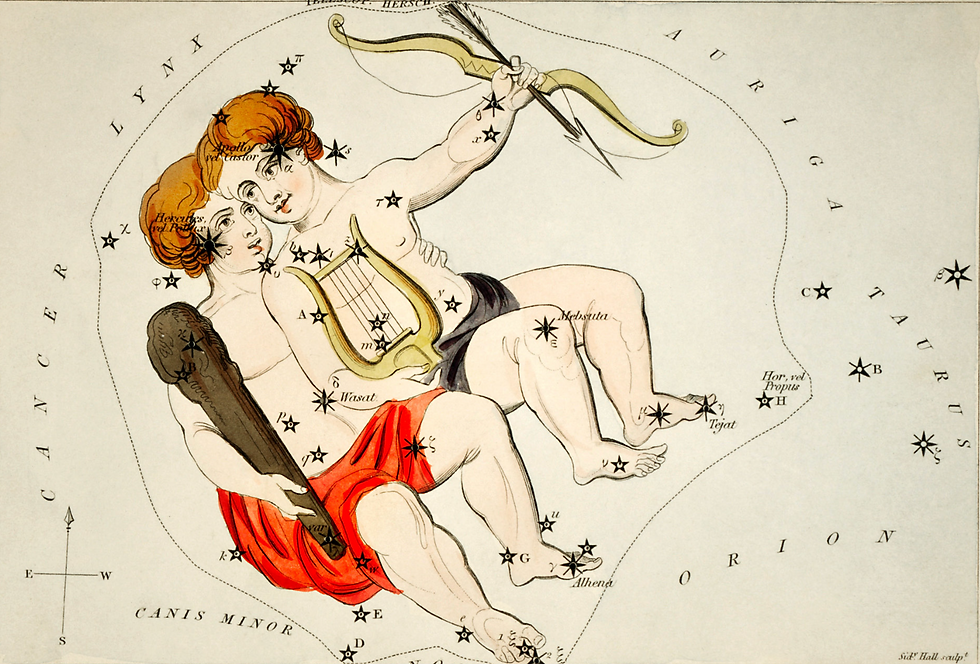Writing with the Seasons
- Órbita Semanal

- Sep 4
- 3 min read
Updated: Sep 15
Writing can be a practice for aligning ourselves with the cycles of life. Nature moves through seasons of growth, harvest, rest, and renewal, and our inner world reflects these rhythms. Recognizing that our creative process is seasonal, we stop expecting constant productivity and begin to honor the different phases and periods of rest and action.
The Benefits of Aligning with Nature
Writing invites us to slow down and place our attention on what matters most. By putting thoughts and feelings into words, we come into deeper contact with our inner life. This strengthens awareness, sharpens clarity, and allows us to work with the subtle agreements that shape our perspective and life.
Time in Nature is like writing; a medium for self introspection and spiritual growth. The natural world with its cycles and patterns connects us to a source within ourselves.
Just as the earth bears fruit and later lies dormant, our creativity flourishes in its own time when given the chance to follow its natural flow. When we pair writing with attention to nature, we create a practice that grounds us in the harmony of life.

The Middle Path Forward
Writing strengthens our attention and presence. It teaches us to notice the small details, to reflect on our choices, and to become more conscious of how we move through life. From here, we can begin to flow with the cycles around us, shifting with the seasons instead of resisting them.
Like the year which leads us from summer into autumn, winter’s rest, and back to spring’s renewal. Each season carries its own wisdom, and writing becomes the bridge that helps us move through these transitions with awareness. We embrace the movement itself; the process.
Spring brings new beginnings.
Summer celebrates abundance and expression.
Autumn invites reflection and letting go.
Winter offers rest and renewal before the next cycle begins.
Writing is both our anchor and compass, grounding us in the present while guiding us forward.
Writing Best Practices

Through ÓS we place our attention on our core values and life’s goals through daily note-taking. Writing provides us the mental space to return to clarity again and again. Every intention is a seed we choose to plant and cultivate.
One of the best practices is simple: we carry a notebook with us. Ideas often happen during the middle of the day; having a place to capture them ensures they are not lost. The notebook and in turn a notes app are powerful tools if used correctly.
We remember John James Audubon sketching birds in the field, Isaac Newton recording his theories in his late step-father's notebook, or Michelangelo filling pages with quick drawings and fragments of thought everywhere he went in a. constant flow. Consider how their notebooks became the ground where insights first took root.
A great consideration for us today is to ask:
what are we learning from?
What people, books, and sources are we feeding into our consciousness?
We audit our inputs; choosing with care what will inform our growth.
Nature shows us that life itself is cyclical. Each season carries its own energy such as a time to rise, a time to rest, a time to reflect, and a time to begin again. When we write daily, we pay more attention to the days and the rhythm's of the year, and empower our ability to think, feel, and speak with greater clarity.
Carrying Intention Season to Season
The seasons change, yet our intention to live with presence remains steady. Writing helps us carry this intention forward. Each word we set down reminds us of what we value, where our energy belongs, and how we wish to show up in the world. Through the cycles of nature, we learn that there is a time for growth, a time for reflection, a time for rest, and a time to begin again. Through writing, we move in harmony with these rhythms and find ourselves renewed with each turn of the year.





Comments